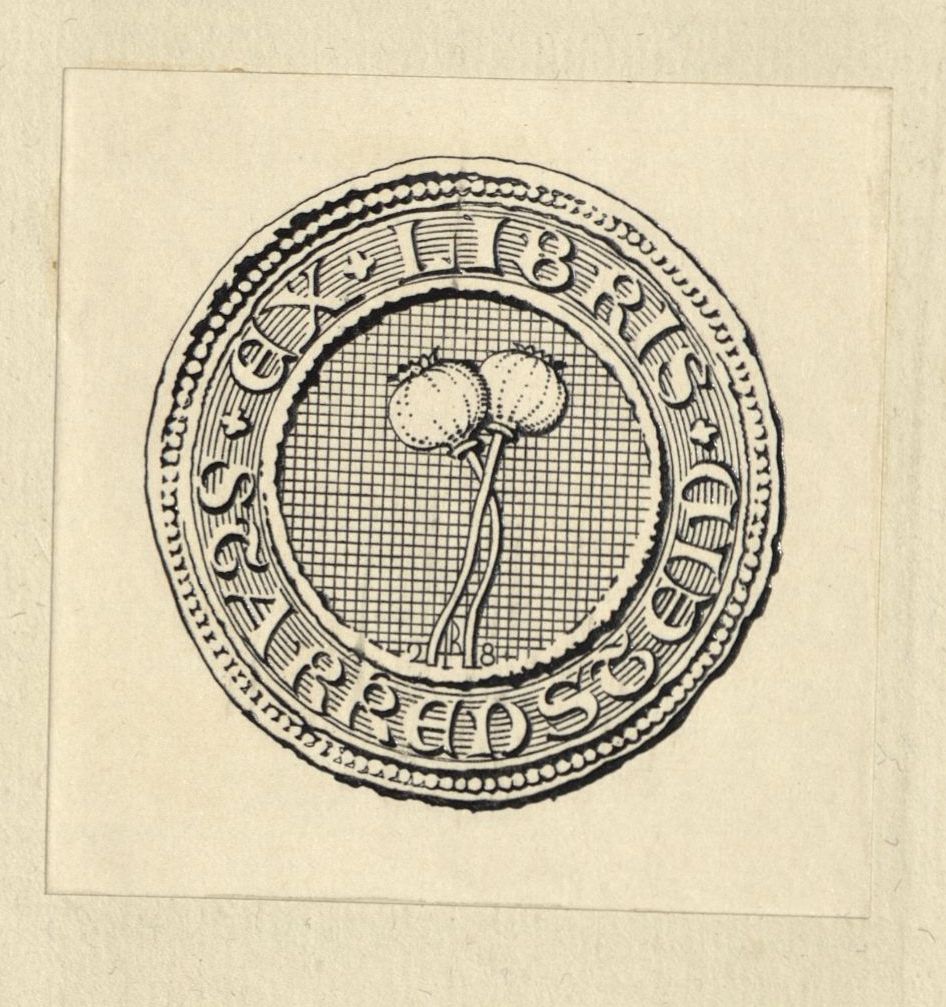
This is Part 2 of a research exploration by Cataloger Vance Woods and History of Science and Rare Books Librarian Anne Bahde. Find Part 1 here.
From here, we could branch our research into different directions to expand our knowledge of the work. We now had pending questions about the title’s content, production, context, and story, as well the physical item’s origin and provenance. First, Vance reached out to the other holding library in Germany. They responded to Vance’s message, but did not have any more information than we did about the piece. (However, after our own discoveries, Vance reached out to them again to share what we had learned; they are in the process of updating their own records accordingly.)
We began filling in our gaps in knowledge about the historical context of the item. A typed bibliography of history of science holdings at OSU produced in 1988 identifies the piece as an “introduction to Libavius’ response to Thomas Erastus’ attack on Paracelsus and the Ioatrochemists. Erastus had attacked Paracelsus in his Disputation Concerning Potable Gold, Basel, 1578.”
This note gave us some excellent starting points to dig deeper. We confirmed that description and built our contextual understanding by quickly finding a few other secondary sources. Our crash course in early modern alchemy yielded a deeper understanding of the significance of this item.

Andreas Libavius was a most eminent figure in early chemistry, an alchemist who attracted his share of controversy during his career. As an alchemist, he was interested in the transmutation of metals into gold. As a physician, he was also interested in the practical value of medical chemistry and the particular medicinal qualities of gold.
His emphasis on pharmaceutical applications put him in opposition to Paracelsus, another physician and alchemist who emphasized the more mystical elements of alchemy. Thomas Erastus, a Swiss physician and defender of medieval Galenic medical practice, was also an outspoken opponent of Paracelsus, and attacked the Paracelsian belief in the transmutation of metals. But Libavius did believe transmutation was possible, and passionately so. He refuted Erastus’ position in a series of publications around the time our pamphlet was published. Our pamphlet seemed to be related to this exchange.
While we began to understand more about the historical context of the item, we also continued to look for the title or fragments of it in Google, HathiTrust, and other digital repositories.
This title presented a common challenge when seeking information about books published in Latin during this time. In the Roman alphabet, there was no distinction between the letterforms V and U. By the time this book was printed, printers were beginning to distinguish between the consonant V and the vowel U, and the rules for using these letters in printing varied over time.
Later catalogers of these items may or may not have transcribed these letters into their modern usage. These variations in spelling, printing, and cataloging practices over time, along with modern variability in optical character recognition of digitized texts, means that when U’s and V’s (or I’s or J’s) are involved, using a variety of spellings in keyword searches will yield the best results.
However, despite many different variations of the title searched across multiple platforms, we found only one result for a title fragment via Google Books (a further indication of the item’s potential rarity). This book, printed in 1600, lists our title among others in an index format.
Vance determined that this book was a compilation of publications between 1593 and 1600, and that the marginal numbers were dates of printing. To test this, he looked for other titles listed in this book in Worldcat and found that they corresponded to the dates listed here. This title therefore suggests that our title was published in 1596.

As we researched the historical context of the item, one name kept coming up in our secondary sources: Dr. Bruce Moran, a scholar of Libavius and early modern chemistry at the University of Nevada, Reno. Moran’s definitive scholarship on Libavius has included a number of Libavius’ known works and editions. Vance reached out to him with a scan of the title page to see if he could help us identify the piece. He graciously replied with some intriguing answers.
Moran’s translation of the final line of the title page indicated that a copy of the Erastus text in question was meant to be attached to this counter-text by Libavius for the purposes of comparison and censure. However, Moran also indicated that he had never heard of this title before, and that the item was stumping him as much as us. While we now had some understanding of this piece, previous questions still lingered just as new ones had been raised. Part 3 follows next week.





















